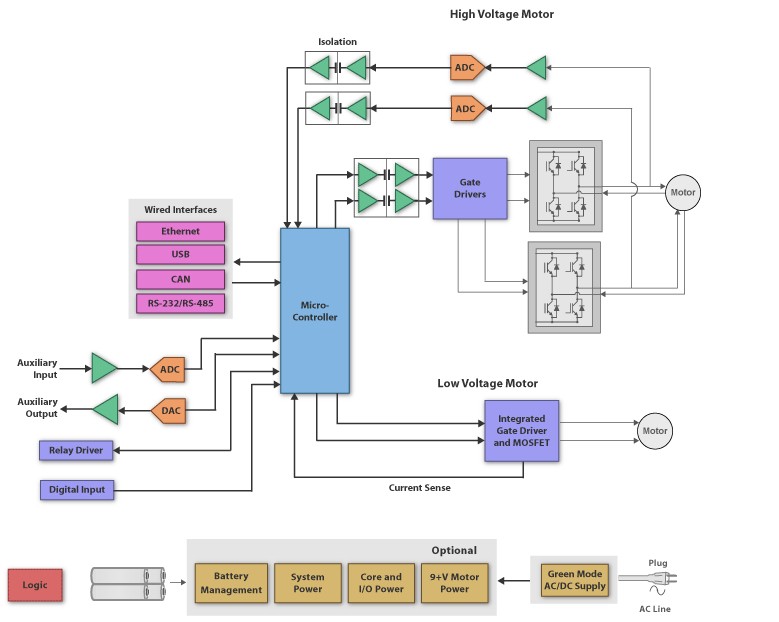Block diagram

Design considerations
Stepper motor overview
The stepper motor is fitted with a rotor with permanent magnetism and the stator has at least two windings. When the rotor magnetism is consistent with the stator winding, the second winding will be driven. The two windings alternately open and close, which causes the motor to lock in the desired step position. The direction of the current through the winding can also be reversed.
In a stepper motor with two stator windings, four steps are separated by 90°. The stepping of the stepper motor movement can be precisely controlled based on the pulses supplied to the stator windings.
The speed control of the stepper motor can be achieved by supplying a pulse frequency to the winding, and the direction of rotation can be changed by a reverse pulse sequence. The pole pieces inside the motor have a number of teeth that help position the rotor relative to the stator. Some stepper motors also have teeth on the stator stage.
The stepper motor can be controlled in full step, half step or micro step depending on the control technology used. Simple square pulses control the motor in full step, while advanced control techniques such as pulse width modulation (PWM) can be used for microstepping.
microprocessor
The basic MSP430 MCU works with step-control driver ICs such as the DRV8412 to provide full stepping or up to 16 microsteppings at a very low cost. More complex stepper motor control is available through Stellaris® or C2000TM MCUs. Onboard peripherals such as ADC and PWM create a highly integrated solution that meets all application requirements for stepper motors.
Interface/connection
Traditional analog RS-232/RS-485 interfaces have always been a common choice for motor control applications. Looking ahead, designers will integrate mainstream interfaces such as Ethernet, USB and CAN into their products.
TI is committed to providing solutions for both traditional and emerging industrial interfaces. For example, TI recently introduced the world's first isolated CAN transceiver ISO1050.
Power management
Texas Instruments offers power management IC solutions ranging from standard ICs to high performance plug-ins, transformers, digital power MOSFETs and integrated power modules.
From AC/DC and DC/DC power supplies, linear regulators and non-isolated switching DC/DC regulators to PMIC and power and display solutions, Texas Instruments' power management IC solutions can help you with Project Development.
LED garden light,High Quality LED garden light,LED garden light Details, CN
ZHONGSHAN G-LIGHTS LIGHTING CO., LTD. , https://www.glightsled.com